Latest news on ETFs
Visit our ETF Hub to find out more and to explore our in-depth data and comparison tools
Traditional index-tracking exchange traded funds bagged less than a quarter of the new money flooding into US-listed domestic equity ETFs in January, according to data from Citi.
The flows may be a sign that the traditional low-cost passive bedrock of the ETF world is being challenged by the combined forces of actively managed ETFs, derivatives-heavy products that seek to limit risk, factor-based “smart beta” ETFs and sector funds.
According to Morningstar, US-listed active ETFs pulled in a record $43bn in January, ahead of the previous record of $34bn, set as recently as November, following 579 active ETF launches on Wall Street in 2024.
Derivative income ETFs, a category that includes risk-averse covered call funds, also had a record month, with $5.6bn of net new money, Morningstar said.
“The market seems to be gradually and consistently transitioning to these [active and options-based] products,” said Scott Chronert, global head of ETF research at Citi. “I wouldn’t say it’s an outright game-changer month but the flow trend has been quite persistent over the past year.”
Sector ETFs were also in demand, with technology funds pulling in $40bn — despite being the only sector with losses in January — and financials $39bn, based on Citi’s numbers. Smart beta funds attracted $7.7bn.

As a result, “traditional index ETFs were less than a quarter of monthly flows, a stark departure from 2024 and prior years”, Chronert said.
January’s flow data is the latest sign of the ETF industry branching out from its low-cost, passive, core equity roots.
But Chronert cautioned that last month’s flows might have been distorted by the growing influence of the model portfolios of ETFs deployed by registered investment advisers and wirehouses.

“The first part of the year is when you are going to see a lot of model portfolios rebalance, and it’s very hard to disaggregate money going in from a pure rebalance,” Chronert said.
In particular, in what he labelled a “battle for the core”, Chronert said model portfolio providers were “increasingly using a suite of actively managed ETFs”, rather than passive vehicles as in the past, to generate core US equity exposure.
The list of top 20 best-selling ETFs in the US in January included the JPMorgan Nasdaq Equity Premium Income ETF (JEPQ), a covered call strategy; two sector funds in the Vanguard Information Technology ETF (VGT) and the Financial Select Sector SPDR Fund (XLF); and a smart beta ETF, the iShares MSCI USA Momentum Factor ETF (MTUM).

Model portfolio rebalancing may also have been a factor behind “surprisingly” strong inflows into US-listed fixed income ETFs — $37.3bn, the second-highest figure ever, according to Citi — Chronert said.
With the S&P 500 index returning 25 per cent last year, many model portfolios will have been selling equity ETFs and buying bond funds to bring their asset class weightings back into line with their desired mix.
Funky non-core exposures also played a part in bond funds’ success. Actively managed ETFs proved popular, raking in $16.3bn according to Citi, while Matthew Bartolini, head of SPDR Americas research at State Street Global Advisors, pointed to a monthly record $7bn going into bank loan and collateralised loan obligation funds.
Overall, US-listed ETFs saw net inflows of $92bn in January, according to SSGA data, a record for January, traditionally the second-quietest month, livelier only than August.
Globally, net inflows hit $137bn, according to Morningstar, whose data includes most of the world but not China and India.
Equity funds accounted for $80bn of this, but fixed income ETFs again “punched above their weight in January,” said Syl Flood, senior product manager at Morningstar, with their $45bn monthly tally the second-highest on record, bettered only by the $50bn of July 2024.
Active ETFs also set a record at global level, with net inflows of $49.5bn, representing a monthly organic growth rate of 4.5 per cent, Flood said, the highest figure since the early 2021, when active ETFs were still in their infancy.
They now account for 8 per cent of global ETF assets, according to Morningstar, up from 6.3 per cent at the end of 2023 and 5.1 per cent a year earlier.






